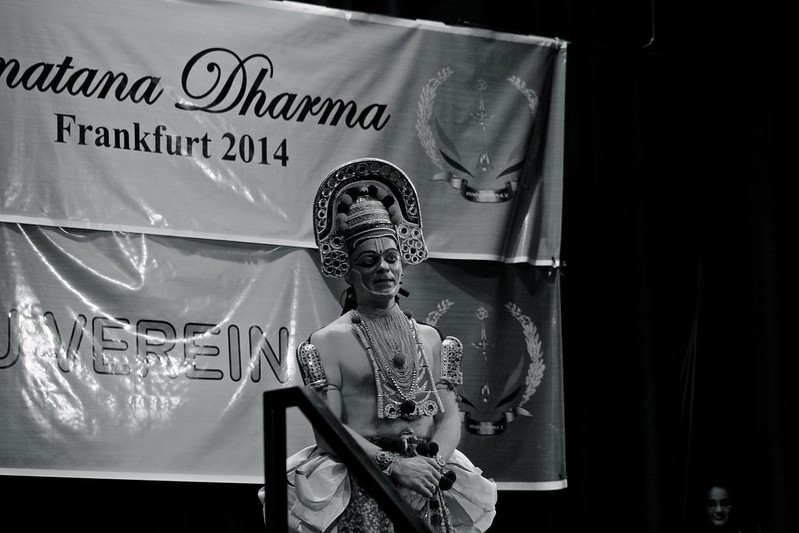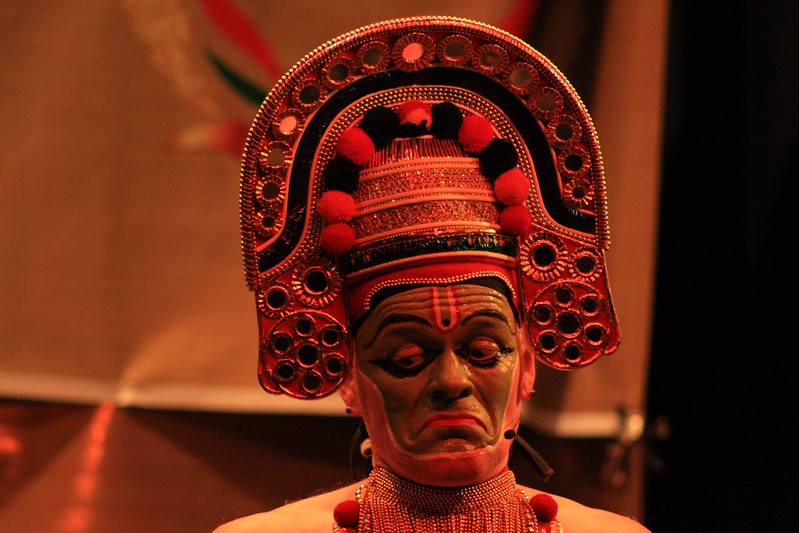On 22-nd February, the Hindu verein (club) in Frankfurt organized a festival about the Indian culture. As a part of the show, Hartmut Schmidt gave an amazing presentation of the Ottamthullal.
Ottamthullal is a performing art created in the 18-th century to provide an alternative to Chakyar Koothu. The usage of malayalam in the narration proved a winning factor traditionally. Hartmut interspersed his narration with German stories and text to tailor it for the assimilated Malayalis in Germany. While performing the fastest of the thullal art, Ottam Thullal, Hartmut displayed indepth understanding of the culture and weaved the two cultures together to create a relatable performance for the audience he addressed.
If one translates “OttamThullal”, one would expect to see severals leaps, bounds and energy on the stage as “Ottam” means a run and “thullal” means leaps and jumps.
However, Hartmut kept it controlled, focussing instead of bringing in the satire through his narration, adapting the story around German situations as well while depicting emotions through his eyes, muscles and gestures. Poothana came alive in German settings and children watched in awe as they were presented with multitudes of “new” stories .
Hartmut has taken years of dedicated training and is the pride of his teacher. For a German artist to speak malayalam easily, while at the same time expressing himself through the art almost as well as an Indian artist, is a great feat. Neither is malayalam an easy language nor are the muscular movements for expressions in any performing art from Kerala easy to master.
Nevertheless, there are some parts where the expressions do not get converted completely to what I am used to. In some cases, perhaps years of German/European restraint stands in the way of achieving the true expressions as an Indian artist can. Perhaps what stands in the way of him transporting me completely to Kerala are those small instances when I can still see he is German. This is common among other Germans I have seen performing Indian dances, and yet, in this aspect, Hartmut is closest to an authentic Indian dancer.
All in all, Harmut conveyed his heartfelt passion for Ottamthullal to the audience through sincere effort at recreating Kerala in Frankfurt. With the mixture of German stories and narration, with the audio for the chorus being simulated through a recorded repetition of the script and with his eyes reconstructing several feelings, the atmosphere was one Kunjan Nambiar would have been proud of.





very nicely written-enjoyed your review of this ancient dance form
Thank you 🙂